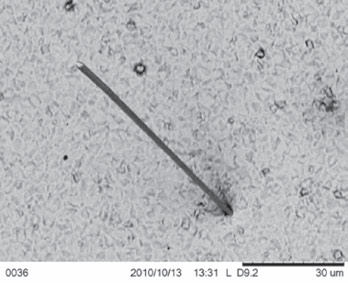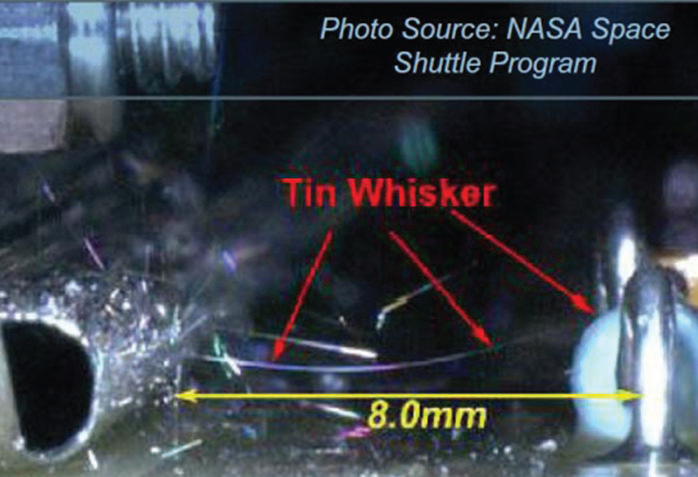Tech Briefs
Savannah River National Laboratory
‘Tin Whiskers’ Suppression Method
Researchers at the Savannah River National Laboratory (SRNL) have identified a treatment method that slows or prevents the formation of whiskers in lead-free solder. Tin whiskers spontaneously grow from thin films of tin, often found in microelectronic devices in the form of solders and platings.
Background
This problem was discovered by Bell Laboratories in the late 1940s and was resolved by adding lead to the tin solder. Due to the Reduction of Hazardous Substance Initiative (ROHS), restricting lead in various types of electronic equipment, the solder and plating industry has moved to lead-free products. Spontaneous growth of tin whiskers takes place from the lead-free solders and platings. As the metallic whiskers extend in length and contact neighboring electronic components (or their whiskers), device failure may occur. Whiskers have led to electronic device failure (F-15 Radar, Galaxy IV and VII Satellites), and will continue to be of concern in communications and weapons systems. Potential failure will become more prevalent with the miniaturization of electronic components and the increase of Pb-free solder usage.

At a glance
- Technically simple
- Proven results
- Cost effective
- U.S. Patent 8,709,179
How it works
Typically whisker mitigation is achieved by application of conformal coatings, which is an additional protective layer on the electronic components. The extra material selection, material compatibility and heavier weight requires additional manufacturing and process control, and may be breached over time by the tin whiskers.
When gamma irradiation is used for a short period it changes the metallic crystal growth mechanism from whisker to wide- but short hillock formation, without changing the solder chemistry. The process is straight forward and this treatment for the long-term use of electronic devices is cost-effective.

Partnering Opportunities
SRNL invites interested companies with proven capabilities in this area of expertise to develop commercial applications for this process or product under a cooperative research and development agreement or licensing agreement. Interested companies will be requested to submit a business plan setting forth company qualifications, strategies, activities, and milestones for commercializing this invention. Qualifications should include past experience at bringing similar products to market, reasonable schedule for product launch, sufficient manufacturing capacity, established distribution networks, and evidence of sufficient financial resources for product development and launch.
Download Tech Brief
Contact Information
Savannah River National Laboratory
E-mail: partnerships@srnl.doe.gov